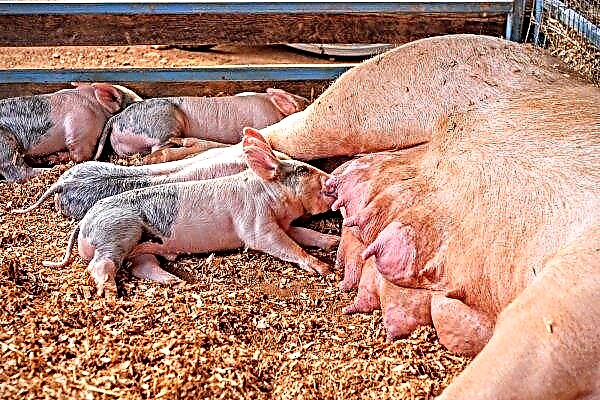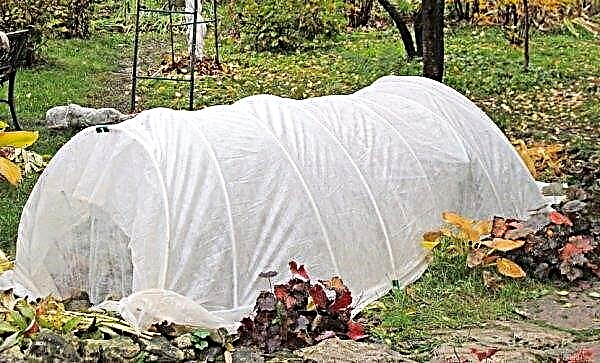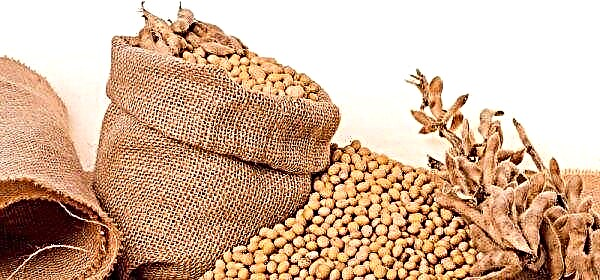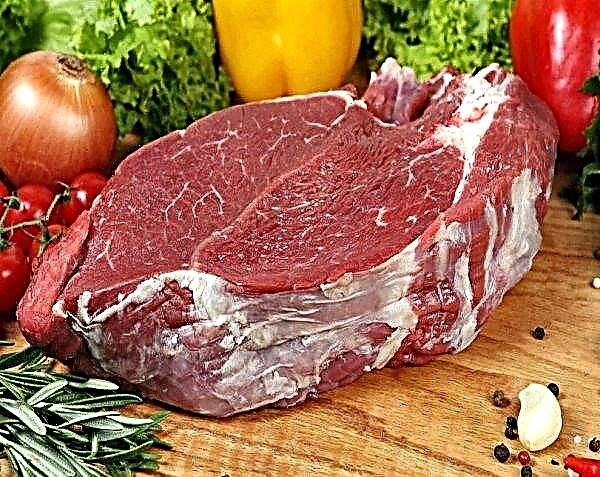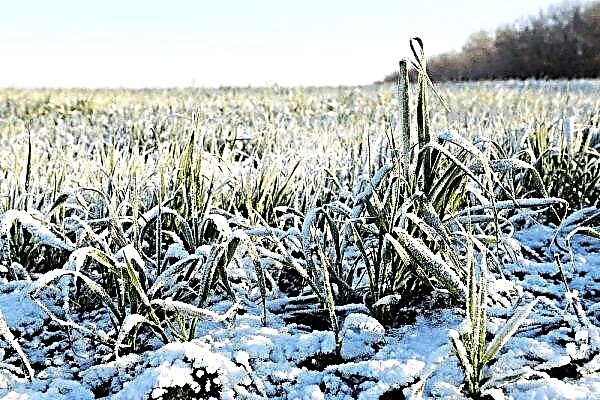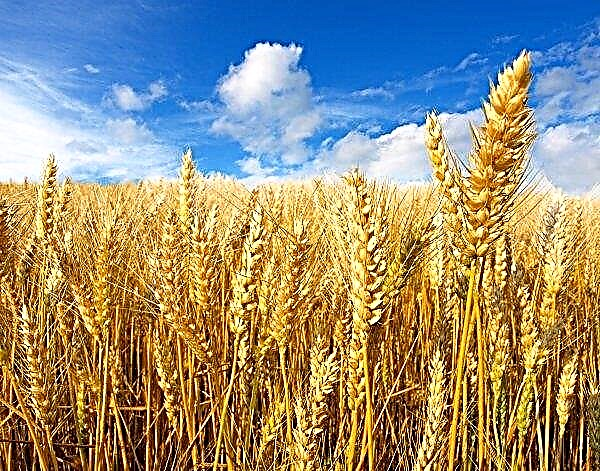The inexperienced farmer's period of cow pregnancy raises a number of questions. In this article, we will consider all the subtleties of caring for an animal during pregnancy, the timing of gestation and the process of childbirth.
How long does a cow last?
During pregnancy, a number of changes occur in the body of the heifer, which should be taken into account in order to ensure proper care.
The average cow wears a calf 285 days, but there are deviations. A slight reduction or increase in the period of gestation does not apply to pathology, for example:
- early calving (not earlier than the 240th day) may occur due to a large fetus, a deficiency of vitamins and minerals in the diet, psychological factors. With proper care, this happens in six out of a hundred cases;
- late calving (no later than the 311st day) can provoke a slow formation of the fetus due to the characteristics of the body of the cow, hormonal imbalance of the body. This occurs in ten cases out of a hundred.
 The reasons that caused an early calving (miscarriage) can be such factors:
The reasons that caused an early calving (miscarriage) can be such factors:- a sharp failure of the hormonal background;
- poor living conditions and unbalanced nutrition;
- the use of aggressive drugs at the beginning of the term;
- errors in the inspection of a pregnant female;
- diseases of the reproductive system;
- exorbitant loads (grazing on distant pastures).
Did you know? The nose print in boryonoks is as unique as the fingerprints in humans. This factor is used by American farmers in the search for stolen wards.
How to determine pregnancy
Since each owner controls the mating of their wards, it is not difficult to find out about the onset of pregnancy. It is necessary to carefully observe the animal, its appearance and behavior. You can find out about an existing pregnancy by the following signs:
- the animal tries to move with caution, it becomes more calm and docile;
- appetite is growing;
- the coat becomes smooth, shine appears;
- vaginal discharge appears.
Rectal examination
A rectal examination will require the help of a second person. Since the procedure is not pleasant, the cow may respond inappropriately, it must be kept. During the examination, the female can stand or lie on her side, if the animal is restless, it is tied to the horns for reliability and the pelvic area is fixed. Before starting the examination, the doctor disinfects the hands, puts on gloves and lubricates them with petroleum jelly to cause the female less unpleasant sensations. With cautious movements, the uterus is palpated through the rectum. A study is conducted two to three months after mating.
Before starting the examination, the doctor disinfects the hands, puts on gloves and lubricates them with petroleum jelly to cause the female less unpleasant sensations. With cautious movements, the uterus is palpated through the rectum. A study is conducted two to three months after mating.
The advantage of a rectal examination is that with the help of palpation an experienced doctor can detect possible pathologies in a female. The method allows you to "examine" not only the uterus and ovaries, but also to identify disorders of the digestive system and urinary system.Important! They try to carry out a similar procedure in the morning, after the cow empty the intestines.
On ultrasound
Pregnancy can be determined in months and days using an ultrasound device, in addition, the study allows you to identify pathologies of fetal development in the early stages. However, you need to know that it is carried out no earlier than a month after mating, otherwise you can provoke a miscarriage. In modern veterinary medicine, portable devices are most often used, which do not require the transportation of the female to a special room, are small in size and convenient to use.
In modern veterinary medicine, portable devices are most often used, which do not require the transportation of the female to a special room, are small in size and convenient to use.
How to determine the date of birth
Knowing the date of mating of his ward, you can determine the date of the alleged birth using a simple formula. Values for the formula:
- “H” - date of mating;
- "D" - the period of calving;
- "M" - the calendar month of insemination;
- fixed numbers 11 and 3.
The calculation is carried out as follows: D = (H + 11). (M-3)
Consider an example: insemination was carried out on April 16, April on the calendar - the fourth month. Therefore, the formula looks like this: D = (16 + 11). (4-3) = 27.01 - January twenty-seventh. If insemination occurred in January or February, then “12” is added to the month number. This formula gives only an approximate value, the calving time depends on the age of the female, the number of previous pregnancies and the characteristics of the body.
If insemination occurred in January or February, then “12” is added to the month number. This formula gives only an approximate value, the calving time depends on the age of the female, the number of previous pregnancies and the characteristics of the body.
How much can move
To calculate the gestation period, experts advise to have a pregnancy calendar, which will indicate the date of insemination, as well as ongoing studies and other procedures.
The excess rate ranges from 10 to 15 days, since a small error is possible in the calculation of conception. There is an excess of calving for three weeks, this is due to the individual characteristics of the body of the body or the development of the fetus. In this case, as in others, the supervision and support of a veterinarian is mandatory.Important! If a female carries a baby for more than three weeks, this is fraught with a sinking pregnancy.

Transfer of a cow to dead wood
Dead wood - this is the period before calving, during which the cows gather strength before childbirth and lactation. The period takes some time, so it is important to know how long the cow carries the baby. Females with their first pregnancy need a rest of at least seventy days, in general, the launch starts no later than forty-five days before calving.
Did you know? The symbol of the island of Madagascar is a hunchbacked zebu cow, which, according to the legend of the islanders, embodies the deity responsible for fertility and procreation.
Power on startup
The diet is changed gradually over a week, at the same time, water consumption is reduced. Concentrated and succulent, green foods are excluded from consumption. Before calving, the cow does not go for free grazing. When stalling, it is allowed to add flaxseed cake, wheat bran, oatmeal. The main diet consists mainly of roughage and hay. In order to prevent obesity or underweight, make up a nutrition schedule with strictly dosed useful elements. For every hundred kilograms of weight should be:
In order to prevent obesity or underweight, make up a nutrition schedule with strictly dosed useful elements. For every hundred kilograms of weight should be:
- squirrel - 210 g;
- fiber - 350 g;
- carotene - 540 mg.
Reduce the number of milking
A sharp reduction in milking threatens the cow with mastitis of the udder, so the launch is carried out gradually:
- the first days are milked twice a day;
- the following days - once a day;
- every three to five days they do not milk, examining the udder for the development of pathologies.

Generic process
A newborn baby needs special conditions. Before calving, the owner of the burenka is obliged to prepare the premises:
- eliminate drafts, dampness and make sure that there is sufficient access to fresh air;
- clean the stall, replace the litter with a clean and soft;
- sanitize floors and drains.
Signs of approaching
It is possible to notice the approach of the birth process by the behavior of the cows. The signs are as follows:
- timidity;
- kicking in place;
- desire to lie more;
- loss of appetite and thirst;
- anxious mooing;
- udder swelling and colostrum secretion;
- secretion of mucus from the vagina;
- relaxation and lowering of the pelvis.
Video: Signs of imminent calving of a cow
How to take
For calving, you need to prepare tools and auxiliary material:
- clean towels;
- warm water and soap;
- potassium permanganate solution;
- iodine;
- scissors.
In the course of labor, a burenka may need help;
- The first to leave the vagina is the fetal bladder. With weak fights, he does not break himself, he needs to be incised.
- In the normal course of labor, the calf moves forward with the limbs. Hind limbs are also considered normal. In case of incorrect presentation of the fetus or suspension of labor, the help of a veterinarian is needed.
- The baby is taken on a clean towel and the umbilical cord is cut off. They treat it with iodine.
- Then the calf is placed closer to the mother so that she releases his respiratory organs from the mucus and licks it dry.
- If the mother is inexperienced and tired, you need to remove the mucus yourself and wipe the baby with a dry towel.

If you properly prepare for the pregnancy of your ward, keep a calendar, provide her with all the conditions for normal bearing, then viable offspring will appear on time and without complications. For the first time, the consultation and assistance of the veterinarian during the gestation period and during childbirth will not be out of place.

